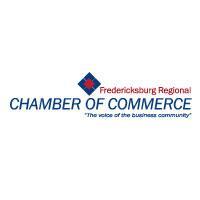Starting a business is like learning to drive a stick shift—jerky at first, often unpredictable, and deeply reliant on timing. Yet what separates those who stall out from those who accelerate is the ability to shift strategies with the terrain. Growth isn’t linear, and it doesn’t come from doing more of the same thing harder. It comes from adapting to the unspoken demands of each stage, knowing when to scale up, when to sit still, and when to take the wheel in an entirely new direction.
Building Early Traction Without Burning Out
When you're just starting, the goal isn't scale—it's clarity. Too many early-stage companies get lost chasing revenue without understanding what kind of business they're actually in. The better play is to spend time earning traction through focus: one product, one customer profile, one distribution channel. This disciplined approach to early growth sets the groundwork for habits that compound, avoiding the common trap of trying to be everywhere and everything too soon.
Tapping Into Relationship Gravity
As the dust of launch settles, the next phase calls for strategic connection, not just outreach. Growth at this point often comes not from louder marketing but from deeper relationships—those that pull in referrals, build trust with suppliers, and unlock unexpected opportunities. Businesses that understand the long tail of reputation and relational momentum begin to see returns that advertising dollars alone can’t buy. The network effect is real, but only when it's fed with authenticity and patience.
Keeping the Back Office Roadworthy
Business growth can stall quickly if your financial and operational records are a mess behind the scenes. Ensuring everything is organized, current, and easily accessible protects you during audits, speeds up funding opportunities, and keeps daily decisions sharp. Saving documents as PDFs helps preserve formatting and makes long-term storage and sharing much more reliable. And if updates are needed, a PDF editor lets you make changes directly without the hassle of converting files—if you're unsure where to begin, just take a look at how streamlined your digital filing system can become.
Treating Systems Like a Product
Scaling means systems, but not just spreadsheets and CRMs—it’s how you translate the soul of the brand into processes that don’t dilute it. Businesses that grow well in this phase see every internal touchpoint as an extension of the customer experience. How a support ticket is handled, how a new hire is onboarded, how data flows between teams—these aren’t just operations, they’re opportunities. And the companies that nail this understand that consistency doesn’t kill creativity; it amplifies it.
Expanding the Right Kind of Risk
With stability often comes the temptation to play it safe, but the middle stages of business demand a more evolved relationship with risk. Not all growth is built on moonshots—some of the smartest moves are calculated, second-layer bets: introducing a product adjacent to an existing winner, entering a parallel market, or partnering with a competitor in surprising ways. Here, growth becomes less about speed and more about leverage. It’s about knowing where the floor is and learning to dance just above it.
Letting Customers Rewrite the Playbook
One of the most overlooked tools in sustainable growth is the customer’s evolving voice. Businesses that thrive in later stages aren’t just listening—they’re letting their audiences co-author what comes next. Instead of relying on static personas or last year’s insights, they run feedback loops like heartbeat monitors, pulsing through every decision with a blend of humility and agility. Growth becomes less of a destination and more of a conversation, recalibrated in real time by those who matter most.
Knowing When to Shrink to Grow
Strangely, one of the most powerful strategies for growth is subtraction. Businesses that prune—cutting underperforming units, retiring outdated offerings, or stepping away from misaligned customers—often unlock a sharper, more scalable core. It takes courage to walk away from revenue in the name of long-term value, but it’s often the only path to true expansion. In a landscape filled with noise and bloat, clarity becomes the real growth engine.
Growth isn’t a single ladder—it’s a series of gears, each requiring its own rhythm, its own kind of muscle. The smartest businesses aren’t just chasing numbers—they’re listening, evolving, and choosing growth that fits the moment instead of forcing one-size-fits-all solutions. From clarity in the early days to flexibility in the later ones, the playbook keeps shifting. What stays constant is the discipline of staying in motion, not faster, but wiser.
Discover how the Fredericksburg Chamber of Commerce can empower your business with unparalleled resources and networking opportunities in our vibrant community!





